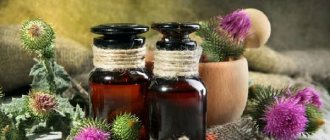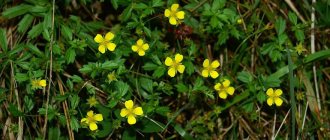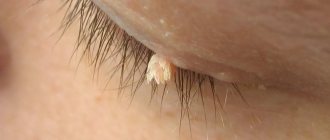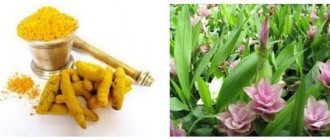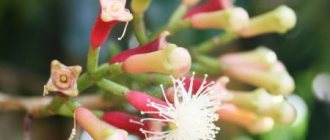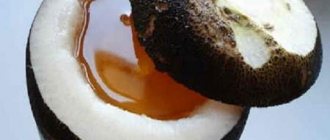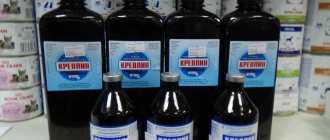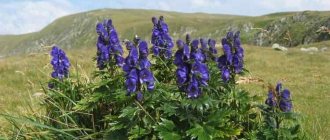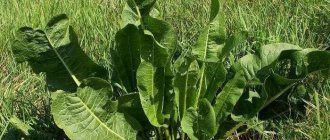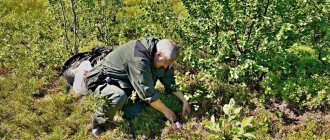Medicinal properties and indications for use
Icelandic moss, or more correctly Cetraria lichen, grows in environmentally friendly places. It takes a long time to develop. During this time, active components accumulate:
- Slime 70%. The component envelops the inflamed area and protects against irritation.
- Polysaccharides (lichenin, isoichen) – dietary fibers replenish the body’s energy balance and have gelling properties.
- Vitamins B1, B2, B12, A – increase immunity.
- Cetrarovic acid – has an immunomodulatory effect, fights microbes.
- Usnic acid – suppresses gram-positive bacteria.
- Glucose, mannose, galactose are involved in metabolic processes.
- Tannins – have a hemostatic effect.
- Micro-macroelements - help with fat metabolism, accelerate the synthesis of carbohydrates.
- Organic acids (bitterness) – stimulate the activity of the gastrointestinal tract.
The chemical composition also includes lipids, wax, protein, starch, and odorous volatile substances. Due to its valuable composition, cetraria has the following properties:
- antiviral;
- enveloping;
- expectorant;
- analgesic;
- soothing;
- antiseptic;
- choleretic;
- wound healing;
- emollient;
- appetizing;
- immunostimulating.
The main purpose of cetraria is the treatment of the respiratory tract and nasopharynx.
Icelandic moss is used in cosmetology, gynecology, increasing male potency, and for skin disorders.
For preventive purposes, lichen is used to raise tone and improve immunity. Dosage forms of use instructions
Cetraria is successfully used for the preparation of syrups, tablets, lollipops, and drops. Each drug fights not only against diseases of the respiratory tract and throat, but is also used for:
- complication after ARVI, acute respiratory infections;
- staphylococcal, streptococcal infection;
- iron deficiency (anemia);
- decreased body tone;
- malfunction of the thyroid gland;
- duodenal ulcer;
- weakened immune system;
- muscle weakness, dystrophy;
- dyspeptic disorders;
- gastritis.
For such diseases, a course of treatment with tablets helps: 3 times a day before meals. The duration of treatment is prescribed by the attending physician.
For diseases of the throat, upper respiratory tract, and hoarseness, lozenges are used. Place the product in your mouth and hold until completely dissolved. Dosage: children take every 2 hours, adults every 1 hour.
During the cold season, syrup with ceraria extract is popular. The product is useful for adults and children. Duration of treatment – 30 days. Dosage: adults – 1 tbsp. spoon 3 times a day, children – 1 teaspoon. If desired, add to hot drinks and tea.
For whooping cough, doctors advise drinking an alcohol tincture, cetrarrium. The drug is sold in bottles. Dosage: children over 12 years old – 10 drops, adults – 20-30. Dilute the product with water and drink. Do not drink for 20 minutes. Then drink plenty of fluids.
Biologically active additives with ceraria are produced in filter bags, granules, and briquettes. The raw materials are poured with a glass of boiling water: granules - 2.5 g, filter bags - 2 g, briquettes - 2 g. After 15 minutes, adults drink half the dose 2 times a day during meals. The duration of the procedure is 30 days.
Icelandic moss – benefits and contraindications, how to brew for cough and take syrup
This is a lichen. Like all other lichens, it is a complex organism consisting of algae and fungi. Neither mushroom nor algae can exist on their own. The algae cells become entangled in the fungal threads and form a tight bond.
The algae supplies food for itself and the fungus through photosynthesis. The fungus is responsible for the absorption of nutrients and their retention. Thus, both organisms contribute to nutrition and complement each other.
Iceland moss is used to treat mouth and throat irritation, loss of appetite, colds, dry cough, bronchitis, indigestion, fever, lung, kidney and bladder diseases.
Some people apply Icelandic moss directly to wounds that are not healing well.
Iceland moss, and other Cetraria species, are found throughout the world, especially in cold areas and mountain forests.
It grows on rocks and tree trunks. It can be collected all year round and dried, like most lichens.
Lichens draw nutrients from the environment and are easily polluted. They grow well in Iceland because it is one of the cleanest countries in the world.
Side effects
Consumption of Irish moss causes virtually no side effects. In rare cases, unpleasant sensations and gastrointestinal discomfort may occur with prolonged use of drugs containing carrageenan.
Thus, Irish moss is of great interest, as it has a large number of beneficial properties and wide areas of use, both in the food and medical industries.
Its use does not harm human health, but, on the contrary, helps in solving many problems and preventing various diseases.
Features of lichen
Icelandic Cetraria is not considered a moss in the generally accepted sense of the word, since it is a symbiosis of two plant forms - a fungus and an algae.
The properties of each form are completely opposite. We can say that their community is built on the mutual complementation of each other with the qualities necessary for development. Algae have the ability to synthesize organic substances that the fungus needs for nutrition. In turn, the fungus supplies the algae with valuable microelements.
Each new true lichen is formed only after the cells of a certain type of algae have combined with cetraria spores.
Despite the geographical reference indicated in the name of the plant, Icelandic moss can be found not only in Iceland. Its habitat is tundra, forest-tundra and swamps, pine forests and heathland.
Therefore, Icelandic Cetraria is considered “their” plant not only by residents of Europe, but also of Asia, Australia and even Africa. However, the first to identify the medicinal properties of lichen were the Icelanders, who used the plant as a dietary supplement.
Official medicine became interested in the medicinal effects of cetraria only in the 18th century.
Chemical composition
Cetraria, Icelandic moss has good healing properties. This is due to the chemical composition of the plant, which includes:
- vegetable protein;
- vegetable fats;
- bitterness;
- isolequinine;
- B vitamins;
- starch;
- galactose;
- glucose;
- lignin;
- retinol;
- sucrose;
- enzymes;
- essential oils;
- micro- and macroelements: chromium, iodine, manganese, molybdenum, sodium, nickel, titanium.
It is the high nutrient content that sets the plant apart from other medicinal herbs, and treatment with Icelandic moss is considered effective.
This is how Icelandic moss grows - a storehouse of valuable substances
How to brew Icelandic moss for coughs
There are different ways to prepare Icelandic cetraria; it is very important to know how to properly brew the raw material when treating a particular disease accompanied by a cough. Let's take a closer look
Cough tea
This cooking method is considered the simplest. At the same time, tea is not inferior in effectiveness to other healing products based on Icelandic moss. This drink is suitable for treating colds, ARVI, flu, laryngitis, and asthma. Tea is used as supportive and preventive measures after the main treatment of bronchitis, whooping cough, and pneumonia.
To prepare, you need to pour a teaspoon of dried lichen into a mug of boiling water, close the lid and leave for 5 minutes. To make the taste less bitter, add 1 tsp. honey Adults are recommended to drink 3 cups of tea per day. The drink should be warm.
Cetraria decoction according to the classic recipe
The product is used for any type of bronchitis, laryngitis, pharyngitis, sore throat, flu, acute respiratory viral infection.
There are only two components of the drink:
- dried moss - 1 tbsp;
- water – 1 mug (250 ml).
Prepare the product as follows:
- Fill the dried raw material with water and place it on the stove.
- Bring the liquid to a boil and simmer over medium heat for 60 minutes.
- Then let it cool and strain.
The healing decoction should be drunk in small sips throughout the day.
Concentrated decoction
The product has a strong healing effect and allows you to quickly cope with cough. The downside of this drink is its strong bitterness.
To prepare the decoction you need:
- Pour 2 tbsp. dry plant with a liter of water and place on high heat.
- Bring the liquid to a boil and reduce the heat to low, simmer for 40 minutes.
- Remove the mixture from the stove and strain.
The product is suitable only for adults; it can be drunk up to 7 times a day. A single dose is a teaspoon.
Icelandic moss in milk
The milk drink relieves dry cough in complicated conditions of pathologies of the respiratory system. The drug is used in the treatment of obstructive and acute bronchitis, pneumonia. With the help of the drink you can eliminate painful attacks of whooping cough.
We use the following cough recipe:
- Pour a tablespoon of dried plant with a cup of milk.
- Boil over low heat for 30 minutes, stirring all the time.
- Then remove from heat, strain and let cool.
- If desired, you can add 1-2 teaspoons of honey to the finished milk drink.
It is best to drink a cup of the product at night to ensure restful sleep. After the first dose, the frequency and intensity of attacks will decrease, and the cough will become less debilitating.
Water infusion
A similar drink will help with bronchitis, tonsillitis, and laryngitis. The product is prepared as follows:
- Take a tablespoon of dried crushed lichen and pour a cup of water.
- Place on the stove over low heat and bring to a boil.
- As soon as the liquid boils, remove the product from the stove.
- Pour the drink into a thermos or wrap it up. Leave for half an hour.
The finished infusion should be divided into 6-7 parts and drunk throughout the day. The product is taken on an empty stomach; you can eat 20 minutes after drinking the drink.
Source: https://mpractika.ru/preparaty/irlandskij-moh-ot-kashlya-detyam.html
For what types of cough is it used in children?
Young children often get sick. In order not to stuff your child with antibiotics, doctors advise taking purchased products in the form of syrup or tablets, which are based on Icelandic moss. Infusions, decoctions, and teas made from lichen raw materials help. In order to muffle the bitter taste, add milk and honey.
Useful components help strengthen the immune system, relieve pain when coughing, and help eliminate infection in a short time.
Cetraria is useful for children with the following diseases:
- whooping cough;
- pulmonary obstruction;
- viral respiratory infection;
- flu;
- tuberculosis;
- pneumonia (pneumonia);
- bronchitis;
- nasopharyngeal disease;
- bronchial asthma;
- angina;
- pleurisy;
- cold.
Cetraria fights dry cough, hoarseness, and complications after the flu.
Attention! For any disease, the doctor must be involved in prescribing the drug, dosage, and duration of use.
- When a child has a dry cough, add thyme to the decoction. Grass is taken in equal shares. Mix all the ingredients, take 1 tablespoon of the mixture. Brew with a glass of water. After 5 minutes, filter and drink 100 ml 2 times a day.
- At the first symptoms of a cold or viral infection, children are given tea and syrup.
- Tablets help with sore throat.
- A debilitating cough will help stop the infusion. Use the product for a week. Children over 12 years old are given 10 drops of tincture.
- For whooping cough, decoctions with milk.
- Bronchial asthma is treated with infusion.
Recipes for cough treatment
Let's now find out how to brew the medicine and what folk recipes are based on it. After consulting with a doctor and establishing a diagnosis, you can begin treatment with lichen.
Recipe No. 1
- Prepare 2 tablespoons of dried moss and pour a glass of clean cold water over it. After this, boil everything in a saucepan and cook for about an hour. How do you know if the moss is cooked correctly? The medicine should be as thick as jelly. Remove from heat, wait another 10 minutes and strain the “jelly” through cheesecloth.
For medicinal purposes, it is enough to take 2-3 sips of lichen decoction throughout the day, with breaks. To be effective, you need to drink it warm. The finished product can be stored in the refrigerator, but try to use it within two days. After this period, you will have to make a fresh decoction. To be sure to drink all the prepared jelly, cook it in small portions.
Recipe No. 2
The following recipe is prepared with milk.
- Take two small spoons of dry Icelandic moss, add a glass of milk. Keep the mixture on fire for 30 minutes. In this form, the infusion is drunk before bed. This recipe is especially effective for whooping cough.
Recipe No. 3
If you have overcome viruses, an irritating cough, or asthma, tea made from medicinal moss will help.
- Dilute a teaspoon of dry lichen in a glass of boiling water, cover the dish and wait 5 minutes. For medicinal purposes, tea in this form should be drunk three times a day. Remember that the decoction is taken hot or warm. Children are given not a whole glass at a time, but 1/3, ½ of the volume, depending on age.
Recipes for use
To prepare decoctions and tea infusions, dry thallus is used. I buy the raw materials at the pharmacy and prepare them myself. Cetraria lives in swampy places, peat bogs, dry pine forests, and high-mountain glades. Collection is carried out throughout the growing season.
Cetraria is torn from the soil. The raw materials are reviewed and if there are impurities, they are removed.
Spread on the surface, dry in the sun, in the shade. Determine readiness by bending method. If the thallus breaks, it means it has dried out. Store the herb in an airtight container.
Icelandic moss with milk
For one-time use at night, take 1 tbsp. spoon of lichen, thoroughly crushed. Pour 250 ml of milk over the grass and put it on the fire. After boiling for 30 minutes on low heat, turn off. The decoction is prepared under the lid. The mixture is filtered and used for bronchitis for 10 days.
Moss tincture
A tablespoon of raw material is poured with a glass of alcohol (60%). The dishes are placed in a dark place for a week. The mixture is shaken every day. At the end of the period, filter and store in the refrigerator. For children over 12 years old, take 10 drops from a pipette and add 30 ml of water. Adults – 30 drops. Take 3 times a day.
The tincture is contraindicated for people with duodenal ulcers, stomach ulcers, and small children. The product helps with diarrhea, cough, weakened immunity, and appetite. When used externally, treat the skin and oral cavity. The tincture has an antiseptic effect.
Tea
The herbal drink made from lichen is no different from preparing regular tea. Half a tablespoon of crushed Icelandic moss is poured with boiling water (250 ml). Allow time for the grass to release its beneficial substances. After 5 minutes the drink is ready. Take tea orally 3 times a day 30 minutes before meals.
Important! A fresh drink is prepared before each meal.
Extract
To obtain the extract, take 100 grams of crushed moss and add 1 liter of water at room temperature. After a day, put it on the stove and boil it down to 50%. The product is added to food, drinks, and baths.
Infusion
To prepare the infusion you will need 4 tbsp. spoons of moss, 0.5 ml of water. All ingredients are mixed, brought to a boil, and set aside. The mixture is infused for 10 minutes. Strain and 1 tbsp. spoon 3 times a day. The jelly-like remedy helps with colds and sore throat, respiratory tract, gastrointestinal tract, tuberculosis. For the purpose of prevention, they use a sedative in case of weakened immunity.
Decoction
For 0.5 liters of water you will need 1 tbsp. spoon of dry moss. Boil over low heat for 5 minutes. The broth is filtered while hot. Take 3-5 times a day. In addition to colds, it helps to lose excess weight. Icelandic moss is prepared in combination with other ingredients to obtain a remedy for stomach ulcers.
Ingredients:
- cetraria - 1/2 tbsp. l.;
- marshmallow – 1/2 tbsp. l.;
- water – 0.45 liters.
Preparation
The herbs are mixed with water and boiled over low heat for 7 minutes. After cooking, strain immediately. Since it will be difficult to do this later, the mixture becomes jelly-like.
Reception
Drink 50 ml five times a day 30 minutes before meals.
Icelandic moss for coughs for children, adults, pregnant women: how to brew - recipes
There are a huge number of recipes for preparing medicinal preparations based on lichen. You can brew the herb, for example, using the following method:
- 2 tbsp of crushed plant pour 1 liter of water
- simmer for about 60 minutes
- strain and drink immediately hot
Small children and some adults sometimes refuse to take medicines based on lichen, because its taste is bitter. To mask the taste, it is better to prepare a decoction with milk:
- pour 1 tbsp of dried herb into a container
- pour a glass of cold milk
- cover with a lid and cook for about half an hour
- strain and consume before bed
To improve the taste, brew moss with milk
The taste of the infusion will be sweet. Therefore, both small and adult patients will happily drink the medicine.
The herb is not addictive or addictive. The only thing is that during lactation, many gynecologists do not recommend using the decoction, since breast milk after moss is considered harmful for the baby.
During pregnancy and under one year of age, you should consult a gynecologist and pediatrician. But cases where there are any contraindications to the use of moss are quite rare.
Types of preparations based on Icelandic moss
Icelandic moss has been studied as a medicinal plant for many years. That is why it is included in many drugs.
"Gerbion" - syrup for dry cough. Allowed for children over 1 year old. Syrup is useful for stress on the vocal cords and during sports exercises. With a dry cough, a protective film is formed on the walls of the lungs, thanks to polysaccharides. Cough reflexes decrease. A measuring spoon is included. Take 4 times a day. The number of grams per dose is distributed by age. Children after one year - 60 mg, adults - 360. It is not advisable to drink for 20 minutes. The syrup should be taken for at least 5 days, but this is decided by the attending physician.
“Pectolvan Phyto” is a bottle with a liquid alcohol extract. Used for dry cough, bronchitis. In addition to cetraria, the composition contains elecampane, thyme, and soapwort. The drug with a specific odor has an expectorant and calming effect. Prescribed for children after 12 years of age. The extract is contraindicated for people with liver disease and diabetes. The drug is diluted with water, taken three times a day. Dose for children – 10 drops, adults – 20, for 5 days.
“Isla moos” – soft tablets for throat problems, bronchitis, cough, hoarseness. Available for children from 4 years old, 1 pill. Keep in mouth until completely dissolved. Subsequent tablets are allowed after 2 hours. Adults – after 1 hour. Reception during the working week.
"Isla Mint" - tablets for sore throat. The protective property of the tablets allows singers to use it as a prophylactic for their vocal cords during sports. The structure of the tablets is gel with a mint flavor, without the absence of sugar. The latter characteristic allows them to be used by people with high sugar levels.
Iceland moss
The article was prepared by a specialist for informational purposes only. We urge you not to self-medicate. When the first symptoms appear, consult a doctor.
Botanical characteristics of Icelandic moss
Icelandic moss (Cetraria islandica) is a lichen that grows on the ground in mountains, forests and arctic regions. In addition to Iceland, moss grows in Scandinavia, Great Britain, North America, Russia and other areas of the Northern Hemisphere. Icelandic moss also grows in Antarctica. It has two chemotypes that are difficult to distinguish, but are collectively called the Cetraria islandica species complex. [1]
The thallus shoot of Icelandic moss curls from 1 to 4 cm (2.5 – 10 cm) in height. This thallus has a different color, for example, on top it is greenish in color, but the lower part of the thallus is light brown. Dried thallus is used as an herbal medicine. Icelandic moss is also known as Icelandic lichen, cetraria, fucus, musk and eryngoleaf liver grass.
Content:
Composition of Icelandic moss
Icelandic moss contains 12.3 g of carbohydrates per 100 g of product, which is approximately 87% of the total energy per serving or 49 kcal.
Composition of Icelandic moss: [2]
- Fats - 0.16 g,
- Proteins - 1.51 g,
- Carbohydrates - 12.29 g,
- Water - 81.34 g,
- Ash - 4.70 g.
Mineral composition per 100 grams:
- Calcium -72.0 mg,
- Iron - 8.9 mg,
- Magnesium - 144.0 mg,
- Phosphorus - 157.0 mg,
- Potassium - 63.0 mg,
- Sodium - 67.0 mg,
- Zinc - 2.0 mg,
- Copper - 0.1 mg,
- Manganese - 0.4 mg,
- Selenium - 0.7 mcg.
Of the fat-soluble vitamins, Icelandic moss contains A, beta-carotene, E and K. Of the water-soluble vitamins, there are vitamins C, B1, B2, B3 (PP), B4, B5, B6 and B9.
Historical uses of Icelandic moss
Since ancient times, people in countries such as Iceland, Sweden, Norway, Finland and Russia have used Icelandic moss for food and medicine. For food, moss was ground into flour and bread was baked; boiling the moss eliminated the bitter taste. When preparing the jelly, you could add almonds and chocolate with lemon to the moss. When boiled in milk, it was a remedy for malnutrition and nausea. Icelandic moss was used to nurse weak children and old people.
The facts of the use of moss in folk medicine have been proven. Lichen was a folk remedy for tuberculosis, lung and chest diseases, kidney and bladder problems. Iceland moss has also been used to treat non-healing wounds, diarrhea, lactation problems, fever and gastritis.
In Norway, during the seven-year famine, people ate moss, and during the Second World War in the Soviet Union, molasses was made from moss.
Beneficial properties of Icelandic moss
Icelandic moss acids are a mild antimicrobial and soothing agent that soothes irritated or inflamed mucous membranes. Using lichen, they treat inflammation of the mouth and pharynx, as well as colds, fever, cough and bronchitis. Icelandic moss contains usnic acid.
Usnic acid is a specific substance that is formed only in lichens. It has antiviral, antibiotic, analgesic, antituberculosis and insecticidal activities.
Moss has a positive effect on human skin, helping with digestive complaints, loss of appetite and gastritis. For example, it is difficult to remove acne in any other way than by using Icelandic moss in the form of tea, taken regularly.
In Europe, you can find Icelandic moss in the form of cough drops. In Russia, moss is sold both in the form of tea or powder, and in the form of thallus.
Several types of cough medicines have been created based on Icelandic moss:
- Pectolvan Phyto is an alcoholic extract of Cetraria. Has an expectorant, thinning and antispasmodic effect;
- Isla moos - lozenges. Used for diseases of the throat and upper respiratory tract;
- Gerbion - syrup. Provides antitussive, anti-inflammatory and immunomodulatory effects for respiratory diseases;
- Isla mint - gel lozenges with the addition of mint oil. Indicated for sore throat.
Icelandic moss is included in many preparations. The preparations are used for pain in the chest or stomach. Moss decoction is used for constipation and diarrhea, since when it is boiled, mucus is formed, which envelops the walls of the stomach. [3] [4]
Uses of Icelandic moss
Icelandic moss is a general tonic, so it is used for all convalescent people.
Icelandic moss for coughs. When moss is brewed, mucus is formed from polysaccharides, which envelops inflamed areas and protects the respiratory tract from irritation. Cetrarovic acid has antimicrobial and immunomodulatory effects. Usnic acid fights gram-positive bacteria. A decoction of Icelandic moss is used to treat diseases such as whooping cough, asthma, tuberculosis, and pneumonia. Icelandic moss is no less effective for viral infections, sore throats, tonsillitis, laryngitis and common colds. Icelandic moss syrup is more effective against coughs. To prepare the syrup, take a tablespoon of finely chopped lichen, steam it with boiling water and infuse it. You can drink it by adding milk, honey or sugar.
Icelandic moss for allergies. We are talking about seasonal allergies - you need to take baths with the addition of an extract of Icelandic moss, and also drink a decoction.
Icelandic moss for constipation. To normalize stool, I take a decoction of Icelandic moss. To prepare it, pour a glass of finely chopped lichen with two liters of boiled water and leave for a day. Take a glass of infusion three times a day.
Icelandic moss for weight loss. The recipe is quite simple; you need to replace one of your meals with eating Icelandic moss jelly. Jelly recipe - one part of lichen is mixed with three parts of water and boiled for three hours to completely boil the moss. The broth should be strained and cooled. Kissel can be mixed with berries and added to fish or meat. When cooking jelly, the problem of moss bitterness persists. In order to rid Icelandic moss of bitterness, it should be soaked for 12 hours in water and soda. For 10 liters of water take 7 tablespoons of soda.
Icelandic moss tea for whooping cough. Take half a teaspoon each of thyme and Icelandic moss and pour 250 ml of boiling water over them. Leave to brew for 5 minutes and strain. Take 1 cup of this tea no more than three times a day.
Icelandic moss tincture. To prepare it, you need to take 40 grams of moss and pour a glass of 60% alcohol into it. We leave everything to brew for a week. You need to take 10 or 15 drops of this tincture. Indications for the use of this medicine are diarrhea, loss of appetite, suffocating cough and diseases of the gastrointestinal tract.
Icelandic moss decoction for the treatment of tuberculosis. The decoction is very easy to prepare. To do this, take 4 tablespoons of Icelandic moss and pour 500 ml of cold boiled water over them. Place the mixture on the fire for 5 minutes. After straining the broth, you can take a couple of sips 3 times a day cold.
Medicine from Icelandic moss for bronchitis. To prepare it you will need enamel dishes, a glass of milk and 1 tablespoon of Icelandic moss (chopped in advance). Place everything in a bowl and put it on the fire for half an hour, remembering to close the lid. Before going to bed, you need to take this medicine hot.
Icelandic moss decoction for stomach atony. To prepare it, you need to take 3 tablespoons of moss, pour 750 ml of water into them and put everything on the fire for half an hour. The result will be a mass similar in consistency to jelly. This paste must be consumed in one day.
Research on the use of Icelandic moss
- Icelandic moss for the treatment of inflammatory diseases of the respiratory tract in children from 4 to 12 years old. The study was conducted on 3,143 children aged 4 to 12 years to identify allergic reactions and the medicinal properties of Icelandic moss. The observations were carried out by both pediatricians and the parents themselves. Subjects received Isla-Moo (n = 1,848) or Isla-Mint (n = 1,295) for 1-2 weeks; 61% of children received 4-6 lozenges per day. 39% of children recovered completely, 55% showed improvements by the end of the treatment period. The use of Icelandic moss in the treatment of children from 4 to 12 years old gave positive results; only isolated cases of allergies and other side effects (nausea, heartburn) were observed. Icelandic moss supports a favorable risk-benefit assessment. [5]
- Icelandic moss to alleviate inflammation after sinus surgery in adults. A study was conducted on 61 people conditionally divided into three groups according to the concentration of Icelandic moss given. Patients suffer from dry and inflamed mouth, swollen lymph nodes, hoarseness and sore throat. All subjects underwent sinus surgery and were given Icelandic moss orally for 5 days. For a long time, all patients breathed through their mouths. Treatment with Icelandic moss caused a direct reduction in the observed pathological changes and symptoms. No significant differences were found between the three control groups. A dose of 0.48 g per day is considered sufficient. [6]
- Usnic acid in the fight against tuberculosis. Recently, tuberculosis has developed resistance to many drugs. Doctors decided to use natural remedies. The study showed that combination drug therapy with usnic acid in the initial stages of the disease provides a better therapeutic effect than non-combination therapy. The synergistic interaction of drugs with usnic acid is achieved only at a certain dosage, which is selected by doctors. Otherwise, there can be no talk of effectiveness. [7]
Contraindications to the use of Icelandic moss
Iceland moss is safe when taken in proper doses. Iceland moss is not regulated by the Drug Regulatory Organization. [8]
The use of Icelandic moss requires consultation with a physician. Application of the powder requires soaking in a silk bag or charcoal filtration in order to properly extract the acid. Some studies show that improperly preparing Icelandic moss increases lead concentrations in it. In rare cases, an allergic reaction is possible; with prolonged use, stomach irritation and liver intoxication are possible. There have been no cases of interaction of moss with other drugs.
You should take Icelandic moss with caution if you have a stomach ulcer. Since moss irritates the mucous membranes of the stomach and intestines. But it is worth remembering that usnic acid fights Helicobacter pylori bacteria that cause stomach ulcers.
Icelandic moss is absolutely safe for all people. The exception is autoimmune diseases.
Links to sources
- Xu M. et al. Authentication of Iceland Moss (Cetraria islandica) by UPLC-QToF-MS chemical profiling and DNA barcoding. 2018 Apr 15;245:989-996 https://www.ncbi.nlm.nih.gov/pubmed/29287470
- Assessment report on Cetraria islandica (L.) Acharius sl, thallus. 6 May 2014 https://www.ema.europa.eu/en/documents/herbal-report/draft-assessment-report-cetraria-islandica-l-acharius-sl-thallus_en.pdf
- Arthuar J. Anderson. Field Guide to Edible Wild Plants. 10 aip 2008. https://books.google.ru/books?id=Z8TqkPYXOR4C&pg=PA106&redir_esc=y#v=onepage&q&f=false
- Assessment report on Cetraria islandica (L.) Acharius sl, thallus. 6 May 2014 https://www.ema.europa.eu/en/documents/herbal-report/draft-assessment-report-cetraria-islandica-l-acharius-sl-thallus_en.pdf
- Engelhard Arzneimittel GmbH und Co. KG, Niederdorfelden, Germany. Tolerance of Icelandic moss lozenges in upper respiratory tract diseases - multicentric drug monitoring study with 3,143 children. Forsch Komplementarmed Klass Naturheilkd. 2004 Apr;11(2):76-82. https://www.ncbi.nlm.nih.gov/pubmed/15138371
- Kempe C. et al. Icelandic moss lozenges in the prevention or treatment of oral mucosa irritation and dried out throat mucosa. Laryngorhinootologie. 1997 Mar;76(3):186-8. https://www.ncbi.nlm.nih.gov/pubmed/9213408
- Ferraz-Carvalho RS et al. Effects of the encapsulation of usnic acid into liposomes and interactions with antituberculous agents against multidrug-resistant tuberculosis clinical isolates. AbstractSend to Mem Inst Oswaldo Cruz. 2021 May;111(5):330-4 https://www.ncbi.nlm.nih.gov/pubmed/27143488
- Food and Drug Administration. West's Encyclopedia of American Law COPYRIGHT 2005 The Gale Group, Inc. https://www.encyclopedia.com/social-sciences-and-law/political-science-and-government/us-government/food-and-drug-administration
Author of the article:
Sokolova Nina Vladimirovna |
Herbalist Education: Diploma in General Medicine and Therapy received from the University named after N.I. Pirogov (2005 and 2006). Advanced training at the Department of Herbal Medicine at the Moscow People's Friendship University (2008). Our authors
Icelandic Moss body cream, 50 ml
Body cream based on Icelandic moss for warming up.
Ointment with a creamy structure and beige color. The smell is sharp and specific. “Icelandic moss” includes a complex of useful, valuable components:
- Icelandic moss – relieves pain, soothes;
- bear fat - warms;
- essential oils of eucalyptus, calendula, bergamot, lavender - fight bacteria and inflammatory processes;
- fatty acid alcohols;
- beeswax, honey;
- distilled glycerin - softens;
- St. John's wort;
- modified starch - makes a protective film.
Thanks to its composition, the ointment has multifunctional functions: it warms, softens, relieves pain, and works as an antiseptic.
Application The product is applied in a thin layer to the sore spot. Due to the liquid consistency of the drug, it is consumed economically.
- For coughs and colds, rub the ointment on the chest.
- Used for hypothermia.
- Treat the site of a dislocation, bruise, or wound on the body.
- Saves the ointment from joint pain.
The drug is applied before bedtime. You will not feel a burning sensation, but a pleasant warmth. To avoid the strong smell, place the fabric on top and secure it.
Contraindications
Cetraria has no side effects. Overdose has not been detected with long-term use. But in some conditions, you need to take medications based on Icelandic moss with caution:
- elevated body temperature 39°C;
- acute form of tuberculosis;
- dysfunction of the immune system;
- the stomach's reaction to acidity is overestimated;
- exacerbation due to any disease (bronchitis, pancreatitis, ulcers, pneumonia, asthma);
- spastic constipation;
- cancer;
- individual intolerance.
There are no prohibitions on alcohol-free medications for pregnant women during lactation. However, you should definitely consult a doctor before taking herbs. Self-medication leads to negative consequences.
